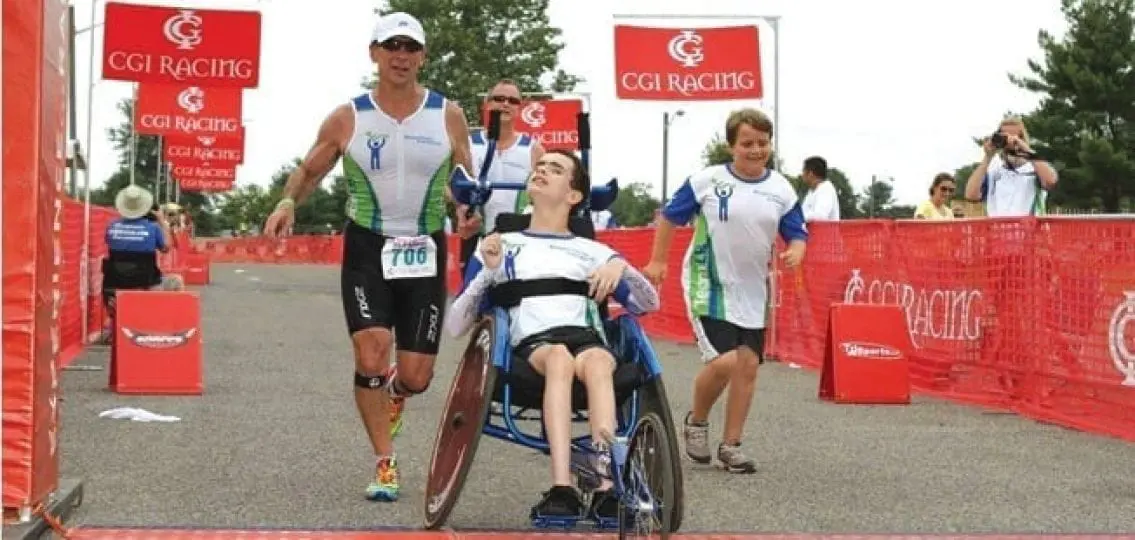Our first child, Blake, was born in 1997. He seemed healthy, but ten months later he began having seizures. He underwent an intensive battery of metabolic and genetic testing. Doctors could not diagnose him.
At two, Blake couldn’t sit up, walk, or speak. He was given a host of speech, occupational, and physical therapies. Thanks to an anti-convulsive medication, his seizures subsided. He learned to sit unsupported but still couldn’t walk. Eventually, Blake began to speak and took his first miraculous steps.
Blake’s seizures returned with a vengeance when he was nine. For the next three years, we sought different opinions and tried many drugs and diets. Despite all our efforts, his seizures were uncontrollable; he was having 150 to 200 seizures per month. Sadly, Blake lost what little speech he had worked so hard to attain.
My wife and I made a decision: we would keep going to hospitals, but we would accept and love our son how he was and give him the best life possible.
Blake attends a special school that takes students out into the community; the kids go to local restaurants and stores to learn skills and allow people to see them. They have jobs at local businesses, where they work hard and customers love them.
Riding the school bus is an event: the kids, with their driver, nurse, and aide, sing, listen to music, and eat snacks … a great way to start and end the school day.
Blake attends prom each spring: dinner and dancing, no parents allowed, just like any other prom. His sports league holds a Halloween and Valentine’s dance every year, too. The girls adore him!
He’s a man of many passions: listening to his brother play the trumpet; riding with lifeguards on ATVs at the beach; riding roller coasters at Disney World; and watching movies on his iPad. Blake plays six sports in the Challenged Youth Sports League. He swims and surfs with a foundation for special kids.
Basketball is his favorite spectator sport. Recently, Blake met the New Jersey Nets, and all the players signed his jersey.
Together, Blake and I compete in triathlons; I tow him in an inflatable boat during the swim leg of the event, pull him in a carrier behind my bicycle, and push him in a specially-outfitted wheelchair during the run.
Besides my wife and Blake’s brother Luke, our triathlon team includes six adults who monitor Blake for his still-frequent seizures. We have completed dozens of triathlons, half marathons, 10Ks, and 5Ks.
The response from the community is amazing: everyone is excited see Blake race. But it was the other athletes who surprised me most. Many people take the triathlon circuit very seriously, and I’ve always tried not to interfere with them. Turns out, these are some of the greatest folks.
We get athletes flying past us giving Blake a big “Hi!” and “Way to go!” It makes me realize that there is a place for everyone at any table.
As a financial advisor, I am proud that my company, Morgan Stanley, has a philanthropic mission. Morgan Stanley has sponsored many races.
As far as an actual diagnosis goes, our son’s condition finally has been diagnosed as an incredibly rare disorder: a mutation of the STXBP1 gene. Blake is one of approximately 40 reported cases worldwide. The disorder is so rare and so new to the medical world that it does not yet have a name.
Loving our son for who he is has led to wonderful surprises. I am lucky to have a supportive family, loyal friends, and a firm that supports me. What more could I ask for?




